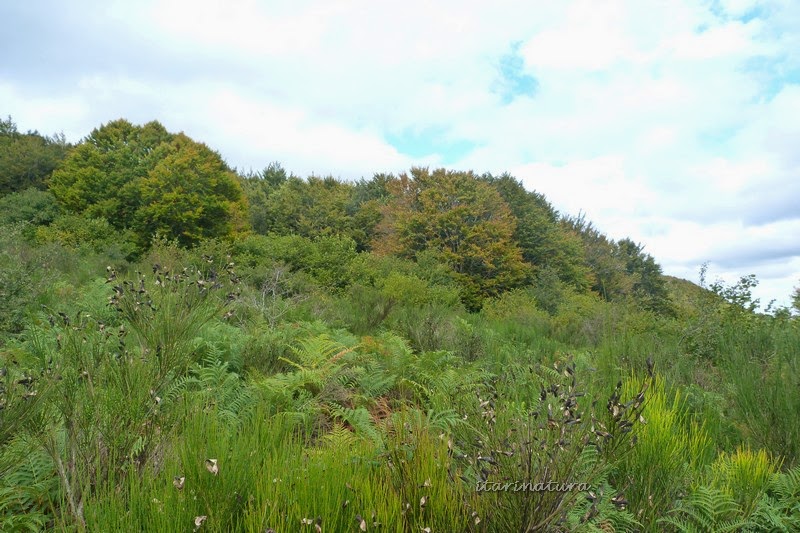http://godzillin.blogspot.com.es/2009/04/unas-huellas-con-historia.html
According to local news from the National Museum of environmental science:
http://digital.csic.es/bitstream/10261/79993/1/NievesAldrey2009_periodicoMuseo.pdf
Was in 1876 when Alfonso de Aretillo y Larrinaga found in the old floor of "plaza del castillo" the plate with the dinosaur footprints,and chose among others, to be investigated in Madrid. The cityhall of Pamplona in that time finally gave the piece for the museum of Madrid.
So, although the events of "plaza del castillo" were as I told you in the previous article, this piece is not for those events.
Before publishing the news, I had looking in google search engine introducing the words dinosaur, arqueosaurio, Plaza del castillo, Pamplona, .. but nothing found. As on the short museum information card dont appeared more details than you saw, and taking into account the history of concealment of the excavations of "plaza del castillo" from Pamplona, it seemed clear the conclusion ..but no. I was wrong and I apologize because all information that I previously published is contrasted and this is the reason that I usually put all the links that I can about it. If this new had it been what seemed , nor I could have found references online.
Now, the question would be: what happened with the rest of plates with dinosaur traces that speaking in the article, and where they came from.? Because in Pamplona, there is no middle Triassic. By the time of formation of these plaques, and that in the nineteenth century would not carried stones for paving a square outside the province.
It seems that the oldest rocks in the area of Pamplona is precisely from this time, located in the valley of Ollo and cendea of Iza. However, they are not mostly limestone, but gypsum and ophites, as you can see here in Euskomedia:
http://www.euskomedia.org/PDFAnlt/prehistoria/04/04061096.pdf
La historia de los materiales geológicos que aparecen en las Cuencas, puede remontarse
hasta el Triásico Medio, cuando el territorio queda cubierto por un lago salino, en cuyo
fondo empiezan a depositarse arcillas con algún nivel de caliza, yesos y sales (Keuper). Al final
del Triásico y durante el Jurásico, este lago del Keuper se abre al mar, que tendrá pocas
repercusiones para lo que luego serán las Cuencas Prepirenaicas. Durante este largo periodo
que llega hasta el Cretácico Superior, se van depositando en un fondo marino las calizas
y margas que hoy rodean las Cuencas.
The history of geological materials appearing in the Basins, can be came from
the Middle Triassic, when the territory is covered by a saline lake, in which
background begin depositing clays with some level of limestone, gypsum and salts (Keuper).
At the end of Triassic period and during the Jurassic, this lake of Keuper opens to the sea, which will have little implications for what will be the Prepirenaicas Basins. During this long period
that reaches until the Upper Cretaceous, are deposited on a dark background limestones
and marls that today surrounding the basins.
So if you encourage to lookin for the quarry from came this stones, I would start in this area, but if you find something of interest, Warn to the forest rangers of Navarre!































.jpg)





















